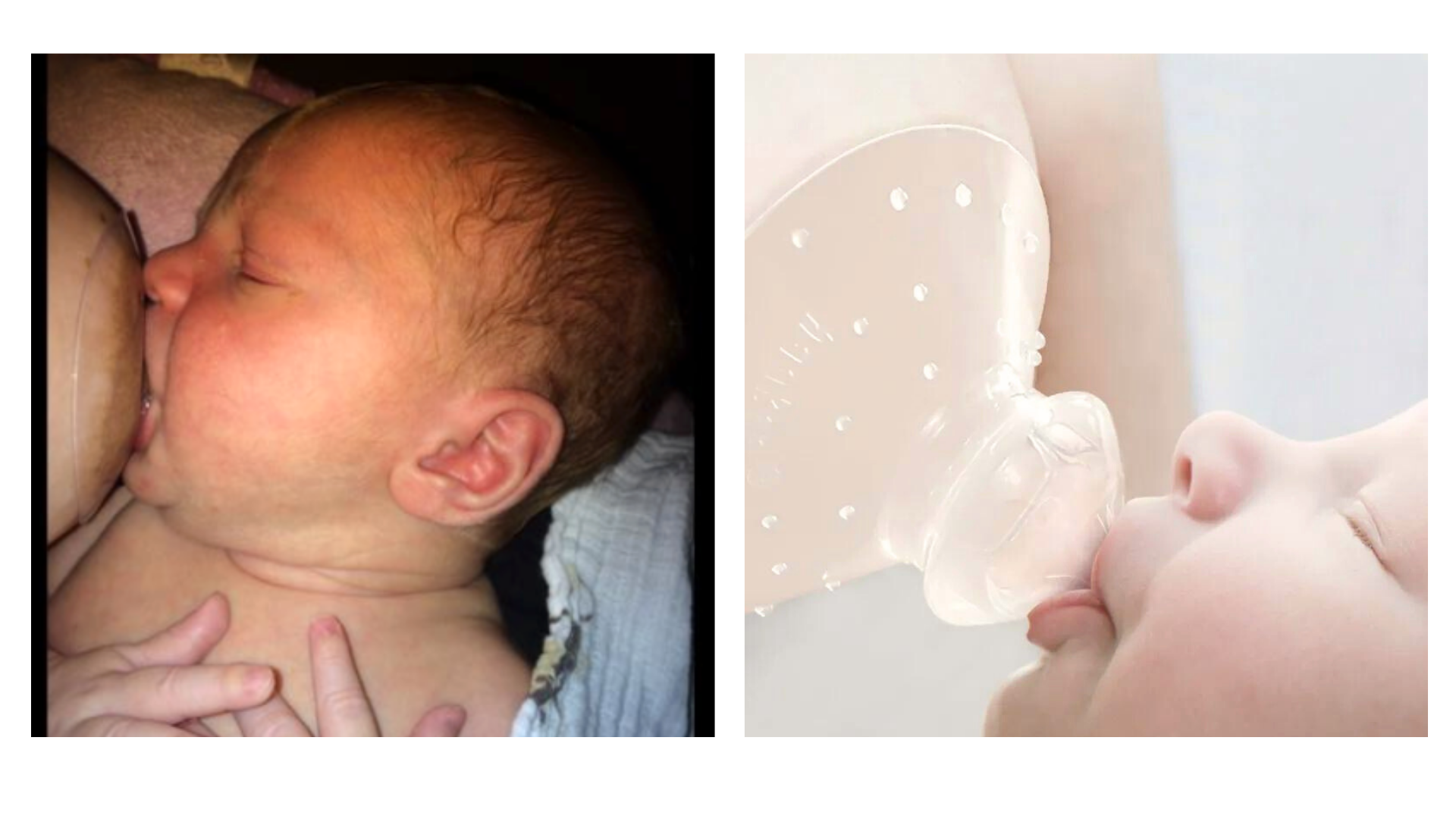Nipple shields are not intended as a panacea but as a strategic tool. They contribute to preserving the breastfeeding relationship by facilitating feedings while concurrently addressing underlying issues. It’s essential to remember nipple shields tackle symptoms, not underlying causes. Too often, nipple shields are passed out like candy the second a mom says, “Breastfeeding is hard.” While nipple shields are a good tool, it’s best not to consider them a permanent solution. Keep reading to learn more about proper shield use and red flags.
Understanding the Design of Nipple Shields:
A nipple shield is a finely crafted, thin, and flexible silicone device engineered to fit over the nipple. Designed with small, strategically placed holes at the tip, it enables smooth milk transfer from mother to baby. The shield’s base delicately flares over the areola, connecting seamlessly with the breast.
When Might I Need a Nipple Shield?
More often than not, nipple shields are included in the “breastfeeding must have” list for new parents. While this list was made with good intentions, most mothers may never need one. In instances where a nipple shield becomes necessary, it warrants investigation. This isn’t to disparage nipple shields but to underscore that they address symptoms, not root causes.
For example, mothers are often given shields to aid with latching issues, as the shield can provide firmness to promote a better latch. However, the genuine concern lies in why the baby struggles to latch efficiently in the first place. The use of a nipple shield signals an underlying issue that requires attention. Shields are indeed valuable tools, but they are not standalone solutions. They support breastfeeding while underlying causes such as tension, dietary concerns, supply issues, or oral function are addressed.
In most cases, shield use is temporary. For instance, it’s employed until nipple damage heals, after which it can be set aside. However, if dependency on the shield persists or the baby only feeds with it, seeking help from a lactation professional is advisable. Some underlying issues can get progressively worse if not addressed early.
Nipple Shields are Helpful in the Following Ways:
- Flat or Inverted Nipples: Shields help extend the nipple, stimulating the baby’s palate.
- Nipple Damage: Acts as a temporary delicate barrier in cases of nipple damage or pain during latching.
- Premature Babies: Aid babies with insufficient strength or development to suck effectively.
- Irregular Palates: Enhance milk transfer efficiency for babies with irregular palates.
- Transitioning Ease: Facilitate the transition between bottle and breast by emulating bottle nipple structure.
However, Keep in Mind:
- Nipple shields may sometimes exacerbate nipple trauma rather than alleviate it. Treating nipple trauma directly is often the best approach.
- If your baby struggles with effective latching and sucking, keep in mind that it is the symptom, not the problem. Nipple shields will not fix underlying issues. In these situations, it’s best to consult with an IBCLC, who can refer you to specialized professionals such as pediatric dentists, infant physical therapists, etc. While alternative avenues should be thoroughly explored to investigate why your baby is struggling with oral function, the judicious use of a nipple shield stands as a preferable alternative to abstaining from breastfeeding altogether.
Choosing the Right Shield:
There are two main shapes of nipple shields in the market:
- Conical & Cherry: These shields gradually widen from a narrow tip to the base, with the cherry shape featuring an indentation for enhanced latch effectiveness.
- Bottle-like: Resembling conventional bottle nipples.
Always, always, always opt for shape #1, as this shape allows the baby to grab more breast tissue in their mouth, ultimately leading to more nipple stimulation, which triggers milk release. Conical and cherry shields are very thin, allowing the baby to stimulate the nipples properly.
Bottle-like shields (shape #2) are much thicker and longer, prohibiting the baby from grabbing enough breast tissue to feed effectively. It’s advisable to avoid these shields altogether. The below image is a great example showing how different nipple shield shapes can change the effectiveness of a baby’s latch.

Understanding the benefits and nuances of nipple shields is crucial for informed decision-making throughout breastfeeding journeys. This post aims not to discredit nipple shields (as IBCLCs, we recognize their value!) but to educate and raise awareness about their appropriate use. Our International Board Certified Lactation Consultants (IBCLCs) are available to offer personalized guidance and support. Click here to request a lactation consultation. Keep up the great work, mamas!

